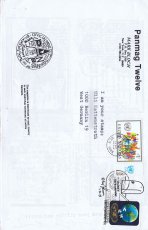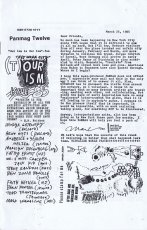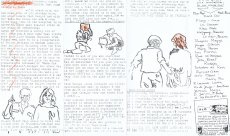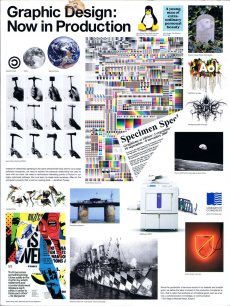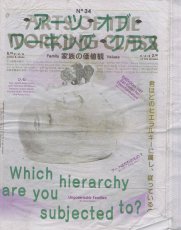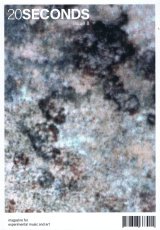Gesucht wurde Art Now, Medienart , Sortierung DatensatzNr., aufsteigend.
Alle Suchbegriffe sind in allen Ergebnissen enthalten: 44 Treffer
AAP Archive Artist Publications - Munich - www.artistbooks.de
|
Verfasser
Titel
Verlag Jahr
Ort Land
Medium
Technische
Angaben
ZusatzInfos
Weitere
Personen
Schlagwort
Geschenk von
TitelNummer
|
Verfasser
Titel
Ort Land
Medium
Technische
Angaben
Schlagwort
TitelNummer
|
Verfasser
Titel
Verlag Jahr
Ort Land
Medium
Technische
Angaben
Sprache
ZusatzInfos
Weitere
Personen
Schlagwort
Erworben bei Kunstforum International
TitelNummer
|
Verfasser
Titel
Verlag Jahr
Ort Land
Medium
Technische
Angaben
ZusatzInfos
Weitere
Personen
Schlagwort
Erworben bei Art Now Galerie
TitelNummer
|
Verfasser
Titel
Verlag Jahr
Ort Land
Medium
Technische
Angaben
Schlagwort
TitelNummer
|
Verfasser
Titel
Verlag Jahr
Ort Land
Medium
Technische
Angaben
Sprache
ZusatzInfos
Schlagwort
Geschenk von
GND Permalink
TitelNummer
|
Verfasser
Titel
Verlag Jahr
Ort Land
Medium
Technische
Angaben
Sprache
ZusatzInfos
Weitere
Personen
Schlagwort
Erworben bei Internet
TitelNummer
|
Verfasser
Titel
Verlag Jahr
Ort Land
Medium
Technische
Angaben
Sprache
ZusatzInfos
Schlagwort
Erworben bei Better World Books
TitelNummer
|
Verfasser
Titel
Verlag Jahr
Ort Land
Medium
Technische
Angaben
Sprache
ZusatzInfos
Weitere
Personen
Schlagwort
Geschenk von
TitelNummer
|
Verfasser
Titel
Medium
Technische
Angaben
ZusatzInfos
Geschenk von
TitelNummer
|
Verfasser
Titel
Verlag Jahr
Ort Land
Medium
Technische
Angaben
Sprache
ZusatzInfos
Geschenk von
TitelNummer
|
Verfasser
Titel
Verlag Jahr
Medium
Technische
Angaben
Sprache
ZusatzInfos
Weitere
Personen
Schlagwort
Geschenk von
TitelNummer
|
Verfasser
Titel
Verlag Jahr
Ort Land
Medium
Technische
Angaben
Sprache
ZusatzInfos
Weitere
Personen
Sponsoren
Schlagwort
Geschenk von
TitelNummer
|
Verfasser
Titel
Ort Land
Medium
Technische
Angaben
Sprache
ZusatzInfos
Weitere
Personen
Schlagwort
Geschenk von
TitelNummer
|
Verfasser
Titel
Verlag Jahr
Ort Land
Medium
Technische
Angaben
ZusatzInfos
Schlagwort
TitelNummer
|
Verfasser
Titel
Verlag Jahr
Ort Land
Medium
Technische
Angaben
TitelNummer
|
Verfasser
Titel
Verlag Jahr
Ort Land
Medium
Technische
Angaben
Sprache
ZusatzInfos
Weitere
Personen Albrecht D. (Dietrich Albrecht)
Schlagwort
WEB Link
Geschenk von
TitelNummer
|
Verfasser
Titel
Ort Land
Medium
Technische
Angaben
Sprache
ZusatzInfos
Weitere
Personen
Schlagwort
Erworben bei alias books east
TitelNummer
|
Verfasser
Titel
Verlag Jahr
Ort Land
Medium
Technische
Angaben
Sprache
ZusatzInfos
Weitere
Personen
Schlagwort
Geschenk von
TitelNummer
|
Verfasser
Titel
Verlag Jahr
Ort Land
Medium
Technische
Angaben
ZusatzInfos
Weitere
Personen
Schlagwort
Geschenk von
TitelNummer
|
Verfasser
Titel
Verlag Jahr
Ort Land
Medium
Technische
Angaben
TitelNummer
|
Verfasser
Titel
Ort Land
Medium
Technische
Angaben
Schlagwort
TitelNummer
|
Verfasser
Titel
Ort Land
Medium
Technische
Angaben
Schlagwort
TitelNummer
|
Verfasser
Titel
Verlag Jahr
Ort Land
Medium
Technische
Angaben
Sprache
ZusatzInfos
Weitere
Personen
Schlagwort
Erworben bei Buchhandlung Walther König Köln
TitelNummer
|
Verfasser
Titel
Verlag Jahr
Ort Land
Medium
Technische
Angaben
Schlagwort
TitelNummer
|
Verfasser
Titel
Verlag Jahr
Ort Land
Medium
Technische
Angaben
Schlagwort
TitelNummer
|
Verfasser
Titel
Verlag Jahr
Ort Land
Medium
Technische
Angaben
Sprache
ZusatzInfos
Weitere
Personen TitelNummer
|
Verfasser
Titel
Ort Land
Medium
Technische
Angaben
ZusatzInfos
TitelNummer
|
Verfasser
Titel
Verlag Jahr
Ort Land
Medium
Technische
Angaben
ZusatzInfos
WEB Link
Erworben bei The Library Project
TitelNummer
|
Verfasser
Titel
Verlag Jahr
Ort Land
Medium
Technische
Angaben
ZusatzInfos
Weitere
Personen
Schlagwort
Erworben bei Michalis Pichler
TitelNummer
|
Verfasser
Titel
Verlag Jahr
Ort Land
Medium
Technische
Angaben
ZusatzInfos
Weitere
Personen
WEB Link
Geschenk von
TitelNummer
|
Verfasser
Titel
Verlag Jahr
Ort Land
Medium
Technische
Angaben
ZusatzInfos
Schlagwort
WEB Link
TitelNummer
|
Verfasser
Titel
Verlag Jahr
Ort Land
Medium
Technische
Angaben
ZusatzInfos
Schlagwort
WEB Link
TitelNummer
|
Verfasser
Titel
Verlag Jahr
Ort Land
Medium
Technische
Angaben
Sprache
ZusatzInfos
Weitere
Personen
Schlagwort
Geschenk von
TitelNummer
|
Verfasser
Titel
Verlag Jahr
Ort Land
Medium
Technische
Angaben
Sprache
ZusatzInfos
Weitere
Personen
Schlagwort
Erworben bei art book cologne
TitelNummer
|
Verfasser
Titel
Verlag Jahr
Medium
Technische
Angaben
Sprache
ZusatzInfos
Weitere
Personen
Sponsoren
Schlagwort
WEB Link
Erworben bei wordery - your online bookshop
TitelNummer
|
Verfasser
Titel
Verlag Jahr
Ort Land
Medium
Technische
Angaben
ZusatzInfos
Weitere
Personen Edelbert Köb (Herausgeber - Text)
Schlagwort
WEB Link
Geschenk von
TitelNummer
|
Verfasser
Titel
Verlag Jahr
Ort Land
Medium
Technische
Angaben
Sprache
ZusatzInfos
Weitere
Personen
Schlagwort
Erworben bei art book cologne
TitelNummer
|
Verfasser
Titel
Verlag Jahr
Ort Land
Medium
Technische
Angaben
Sprache
ZusatzInfos
Geschenk von
TitelNummer
|
Verfasser
Titel
Verlag Jahr
Medium
Technische
Angaben
Sprache
ZusatzInfos
Weitere
Personen Gumdesign (Gestaltung)
Schlagwort
WEB Link
Geschenk von
TitelNummer
|
Verfasser
Titel
Verlag Jahr
Medium
Technische
Angaben
Sprache
ZusatzInfos
Weitere
Personen
Schlagwort
Geschenk von
TitelNummer
|
Verfasser
Titel
Verlag Jahr
Ort Land
Medium
Technische
Angaben
Sprache
ZusatzInfos
Weitere
Personen
Schlagwort
WEB Link
Erworben bei Hotel Mariandl
TitelNummer
|
Verfasser
Titel
Verlag Jahr
Ort Land
Medium
Technische
Angaben
Sprache
ZusatzInfos
Weitere
Personen
Schlagwort
WEB Link
Erworben bei Igitte Schwestern
TitelNummer
|
Verfasser
Titel
Verlag Jahr
Ort Land
Medium
Technische
Angaben
Sprache
ZusatzInfos
Weitere
Personen
Schlagwort
WEB Link
Erworben bei Daniel Melfi
TitelNummer
|
Copyrighthinweis: Das Copyright für die abgebildeten Publikationen bleibt bei den jeweiligen Rechteinhabern (Autoren, Künstlern, Fotografen, Gestaltern, Publizisten). Die Abbildungen und Textzitate dienen der künstlerischen und wissenschaftlichen Recherche.
Hier werden Werke dokumentiert, die sonst nur schwer oder gar nicht zugänglich wären. Wer nicht damit einverstanden ist, dass sein Werk auf dieser Webseite gezeigt wird, kann die Abbildung umgehend durch mich löschen lassen.
Für wissenschaftliche Recherchen können die großen Abbildungen auf Antrag freigeschaltet werden.
Wenn Sie als Rechteinhaber möchten, dass Ihre Abbildungen bei Klick größer gezeigt werden (Höhe x Breite = ca. 800 x 1200 Px), dann melden Sie sich bitte bei mir:
Hier werden Werke dokumentiert, die sonst nur schwer oder gar nicht zugänglich wären. Wer nicht damit einverstanden ist, dass sein Werk auf dieser Webseite gezeigt wird, kann die Abbildung umgehend durch mich löschen lassen.
Für wissenschaftliche Recherchen können die großen Abbildungen auf Antrag freigeschaltet werden.
Wenn Sie als Rechteinhaber möchten, dass Ihre Abbildungen bei Klick größer gezeigt werden (Höhe x Breite = ca. 800 x 1200 Px), dann melden Sie sich bitte bei mir:












